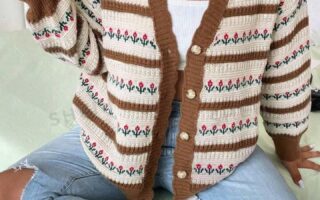The Fabric of Daily Life: Unraveling Roman Women’s Clothing
In the vibrant tapestry of ancient Rome, where politics and art thrived in a delicate dance, women’s clothing emerged as a silent yet eloquent expression of identity and status. Beyond mere fabric and stitch, the garments of Roman women told stories of social hierarchy, cultural influences, and personal choices, each drape and layer offering insight into a world long past. From the flowing stola that signified respectability to the elaborate palla that enveloped its wearer in elegance, clothing was more than a necessity; it was a canvas on which the complexities of femininity, tradition, and societal expectations were deftly portrayed. As we delve into the intricacies of Roman women’s attire, we uncover not just styles and fabrics, but the rich narratives of the women who donned them, threading together threads of history that still resonate today.
Table of Contents
- Exploring the Layers of Roman Womens Fashion
- Fabrics and Colors: A Journey Through Textile Choices
- Accessories That Completed the Roman Look
- Practical Tips for Recreating Ancient Roman Styles Today
- Q&A
- The Conclusion
Exploring the Layers of Roman Womens Fashion
Roman women’s fashion was a tapestry of fabrics, colors, and styles that reflected their social status and personal taste. The stola, a long dress worn by married women, often served as the base of their attire, adorned with intricate patterns and colors. Underneath, they typically wore a tunica, which was akin to a modern-day slip dress, functioning as both a basic undergarment and a standalone garment for the less affluent. The significance of the palla, a large shawl or wrap, cannot be understated, as it showcased a woman’s style while also providing modesty. Key elements of their wardrobe included:
- Fibulae: Decorative brooches used to fasten garments.
- Selvage edges: The edges of garments that were often ornamented to enhance appearance.
- Color symbolism: Distinct colors signified different social statuses, with purple often reserved for the elite.
Accessorizing played a crucial role in Roman women’s fashion, highlighting their elegance and sophistication. Jewelry, often made from gold, silver, or semi-precious stones, was a favored embellishment. Wealthier women adorned themselves with elaborate necklaces, earrings, and bracelets, which displayed their affluence. Hair styles also varied widely, ranging from simple braids to intricate updos embellished with ribbons and natural materials. The table below illustrates common accessories and their meanings:
| Accessory | Meaning |
|---|---|
| Necklaces | Symbol of wealth and status |
| Rings | Signified marital status |
| Hairpins | Functional and decorative, a sign of elegance |
Fabrics and Colors: A Journey Through Textile Choices
Exploring the vibrant tapestry of fabrics in Roman women’s clothing reveals a wealth of choices that are both practical and luxurious. The ancient Romans expertly utilized materials such as wool, linen, and silk to cater to their diverse climate and social standing. Each fabric offered its own unique texture and durability, making clothing not just a matter of style, but also of comfort and function. Here are some pivotal textiles used in Roman fashion:
- Wool: Primarily used for everyday garments, valued for its warmth.
- Linen: Favored in hotter months, allowing breathability and ease of movement.
- Silk: Imported from the East, symbolizing wealth and status among the elite.
Color also played a critical role in signaling social hierarchy and individual expression in Roman society. The use of vibrant dyes, often extracted from natural sources, added a layer of audacity to the garments. Some notable hues included:
| Color | Significance |
|---|---|
| Crimson | Associated with power and authority. |
| Blue | Symbolized serenity and femininity. |
| Gold | Emphasized wealth and opulence. |
Accessories That Completed the Roman Look
To achieve the quintessential Roman aesthetic, the right accessories played a crucial role in enhancing the overall look of women’s outfits. Jewelry was not merely decorative; it reflected social status and personal taste. Items such as golden necklaces, intricate earrings, and delicate bracelets adorned the neck, ears, and wrists, often featuring designs inspired by nature and mythology. Additionally, hairpieces like wreaths made from laurel leaves were worn on special occasions, symbolizing victory and honor, while simple bands of fabric could hold hair elegantly in place.
Another essential accessory was the palla, a rectangular piece of fabric draped around the body. This versatile garment could be styled in numerous ways, adding sophistication to the Roman silhouette. Footwear also played an important part, with sandals made of leather or even woven materials providing both comfort and style. To complete the outfit, ladies often carried small leather bags or purses, ideal for keeping personal items close at hand while accentuating their Roman attire.
Practical Tips for Recreating Ancient Roman Styles Today
To successfully incorporate ancient Roman styles into modern women’s fashion, start by focusing on essential garments that defined Roman attire. The stola, a long dress worn by Roman women, can be adapted using flowing fabrics like linen or silk. Consider layering with a lightweight palla, a shawl or wrap that adds elegance and can be worn draped over one shoulder. To recreate the look, choose earthy tones or pastel shades that mimic the natural dye techniques of the time. Accessories play a vital role as well; use simple leather sandals, and incorporate delicate jewelry inspired by Roman designs, such as gold laurel wreaths or beadwork.
When it comes to hairstyles, Roman women often sported complex braids and updos that spoke to their status and style. You can mimic this by experimenting with modern styling techniques; try twisted buns or braids adorned with hairpins for a chic appearance. Additionally, consider hosting a DIY evening with friends to create your own simple tunics or stolas, using basic sewing techniques. Here’s a quick table to guide you on fabric choices and styles:
| Garment | Fabric Suggestions | Modern Adaptations |
|---|---|---|
| Stola | Linen, Silk | Long, flowing dresses |
| Palla | Lightweight Wool, Cotton | Shawl or wrap styles |
| Accessories | Leather, Gold | Minimalist jewelry |
Q&A
Q&A: Understanding Roman Women’s Clothing
Q1: What were the primary types of clothing worn by Roman women?
A1: Roman women quite favored a few different garments that not only varied in style but also indicated social status. The main pieces included the stola, a long tunic that showcased their marital status, often worn over a tunica. For outer garments, the palla, a rectangular piece of fabric, was draped around their shoulders or over their heads. Women didn’t shy away from accessorizing either; belts and brooches were commonly used to enhance their attire.
Q2: How did social status influence the clothing of Roman women?
A2: Social status played a significant role in Roman women’s clothing choices. Wealthy women often wore garments made from finer materials like silk or decorated with vibrant dyes, while those of lower status typically sported simpler, more practical fabrics like wool. Additionally, certain colors were reserved for elite classes—purple being the most notable. Jewelry and embellishments such as pearls and gold were also indicators of wealth, with the affluent showcasing their status through ostentatious displays.
Q3: What materials were commonly used in Roman women’s clothing?
A3: Roman women’s clothing was fashioned from a variety of materials, reflecting both practicality and luxury. The common fabric was wool, abundant and easy to dye. Wealthy women often opted for linens, cottons, and even luxurious silks imported from the East. The fabric choice was pivotal, not only for comfort and aesthetics but also for the statements they made about the wearer’s social standing.
Q4: Were there any specific occasions that called for particular types of clothing?
A4: Yes, indeed! Different occasions prompted distinct clothing styles. Everyday wear typically included simpler garments, while special events such as weddings, festivals, or religious ceremonies saw women dressing in their finest attire. For weddings, a bride would wear a white stola with a fiery orange belt, symbolizing fertility and marital bliss. During public celebrations, women might don their most ornate garments, representing not only personal joy but also contributing to the overall grandeur of Roman cultural life.
Q5: Did Roman women follow any fashion trends?
A5: Absolutely! Roman women were not immune to the allure of fashion trends. Fashion in Rome was heavily influenced by both social dynamics and the whims of influential figures. The style of clothing could change rapidly, with various emperors and noblewomen setting the tone. Innovations in textile production, foreign influences, and even the age of the woman could dictate how modestly or elaborately they dressed, resulting in a vibrant tapestry of styles over the centuries.
Q6: How did a woman’s clothing reflect her identity in Roman society?
A6: Clothing was a powerful marker of identity for Roman women, often merging personal style with societal expectations. A woman’s attire revealed her social class, marital status, and even her virtues. Simple garb might suggest modesty and virtue, while lavish outfits could imply social ambition or wealth. Moreover, the way the garments were worn—how the palla was draped, for instance—could also signify various aspects of identity, such as adherence to cultural norms or personal expressions of individuality.
Q7: What role did accessories play in completing a Roman woman’s outfit?
A7: Accessories were essential in enhancing a Roman woman’s outfit and projecting her status. Items such as hair ornaments, intricate brooches, and belts made from leather or fabric adorned with metal fittings were commonplace. Additionally, jewelry, including necklaces, earrings, and rings, played a significant role in personal adornment. These accessories not only complemented clothing but also expressed wealth, taste, and personality, ensuring no woman left the house without that final flourish.
Feel free to ask if you have any more in-depth questions or specific topics you’d like to explore!
The Conclusion
As we draw the curtain on our exploration of Roman women’s clothing, it becomes clear that attire in ancient Rome was much more than mere fabric draped across the body; it was a vivid expression of identity, social standing, and cultural values. From the elegant simplicity of the tunica to the intricate designs of the stola, the garments worn by Roman women not only adorned the physical form but also illustrated the complexities of their lives and roles in society.
The layers of fabric tell stories of tradition and innovation, of modesty and grandeur, reflecting the dynamic evolution of women’s fashion as it responded to the shifting tides of Roman society. As we continue to study these historical garments, we unearth not only the aesthetic choices but also the broader narratives of empowerment, resilience, and individuality that define women’s experiences through time.
In a world that often looks back to find inspiration for contemporary fashion, the clothing of Roman women invites us to appreciate the artistry and significance woven into each piece. Their stories, wrapped in the folds of textiles, encourage us to engage with history not just as observers but as participants in a shared narrative—one that continues to guide and influence our understanding of style today. As we step back into our own wardrobes, let us carry forth the spirit of those Roman women who wore their clothing with pride, breathing life into fabric with dreams, aspirations, and untold tales.



